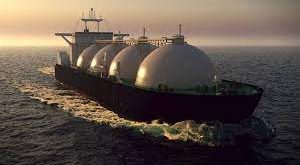A few weeks before the summer driving season begins, U.S. gasoline consumption has plummeted to levels last seen in the late 1960s, due to the lockdowns to contain the spreading of the coronavirus.
With demand for motor fuel plunging, refiners are cutting crude processing, and crude oil storage capacity in America is filling fast. The glut is set to worsen in the coming weeks, and storage capacity at Cushing, Oklahoma, could be full by the middle of May, analysts say.
The fast demand destruction in the pandemic threatens to fill up storage across America soon, forcing oil prices lower and forcing oil producers to idle more rigs and curtail more production than initially thought.
Total U.S. petroleum consumption stabilized in the latest reporting week to April 17 at 14.1 million barrels per day (bpd), up slightly from the 13.8 million bpd estimated consumption in the previous week, which was the lowest weekly consumption level in EIA’s statistics dating back to the early 1990s.
But crude oil and gasoline inventories continued to jump while crude refinery inputs continued to drop, according to EIA’s latest inventory report from this week.
U.S. crude oil refinery inputs averaged 12.5 million bpd during the week ending April 17, which was 209,000 bpd less than the previous week’s average. Refineries continued to cut run rates and operated at 67.6 percent of their capacity. To compare, refiners would typically operate at more than 90 percent capacity just ahead of the summer driving season. But this year, the summer driving season is postponed and is expected to be very weak.
Gasoline consumption – the most significant part of U.S. petroleum consumption – has crashed the most since the lockdowns began, with the product supplied down by 40 percent to 5.3 million bpd as of the week ending April 17, from an average of 8.9 million bpd in 2020 through March 13.
Even if lockdowns across the U.S. were to be lifted tomorrow, gasoline demand is not expected to stage a V-shaped recovery. Instead, it would likely stay around the current levels for weeks and probably months, pushing both gasoline and crude oil inventories higher.
“As negative gasoline demand is still expected to plague the US throughout May, and a very weak driving season is expected during the summer, it is unlikely that demand for crude will return in the first half of the year,” Rystad Energy said this week.
To deplete swelling crude and gasoline inventories, which are higher than five-year averages, U.S. oil producers will need to cut oil production. They will do this because the market will force them to.
The glut in the U.S. and around the world is set to lead to the biggest-ever monthly decline in fracking activity in America, according to Rystad Energy.
“If we assume that no new horizontal wells are put on production from April 2020 onwards, total LTO production will decline by 1 million barrels per day (bpd) by May, 2 million bpd by July and by 3 million bpd by October to November, with the Permian Basin accounting for more than half of nationwide base decline,” the independent energy research company said.
According to Wood Mackenzie, “It’s possible that if current conditions continue, Cushing storage tanks could reach capacity by mid-May.”
“In large part, the damage is done for 2020, and we believe this significant slowdown will lead to a decline of one million to two million fewer barrels per day from activity reduction. Production shut-ins will add to that number as storage capacity peaks,” WoodMac said after WTI Crude May futures dipped into negative territory for the first time ever early this week.
As global oil demand is not expected to quickly return to its usual 100-million-bpd level – if ever, considering the change in our lives in this pandemic—U.S. producers are forced to react to the market forces and slash output much faster than they themselves and analysts had expected just a month ago, not to speak of at the beginning of this year.
The 9.7 million bpd cuts pledged by OPEC+ for May and June will not come close to the demand loss. The OPEC+ intervention – even if every producer in the group fully comply with their quotas (for the first time ever)— will not be enough to prevent oil inventories in the U.S. and the world from overflowing within weeks.
That’s why the real re-balancing act will be the ‘intervention’ of market forces—producers in free markets such as the United States and Canada are not pledging quotas, but their producers are reacting to market conditions and will be slashing output, hoping to weather this perfect storm.

 Iran Energy News Oil, Gas, Petrochemical and Energy Field Specialized Channel
Iran Energy News Oil, Gas, Petrochemical and Energy Field Specialized Channel


